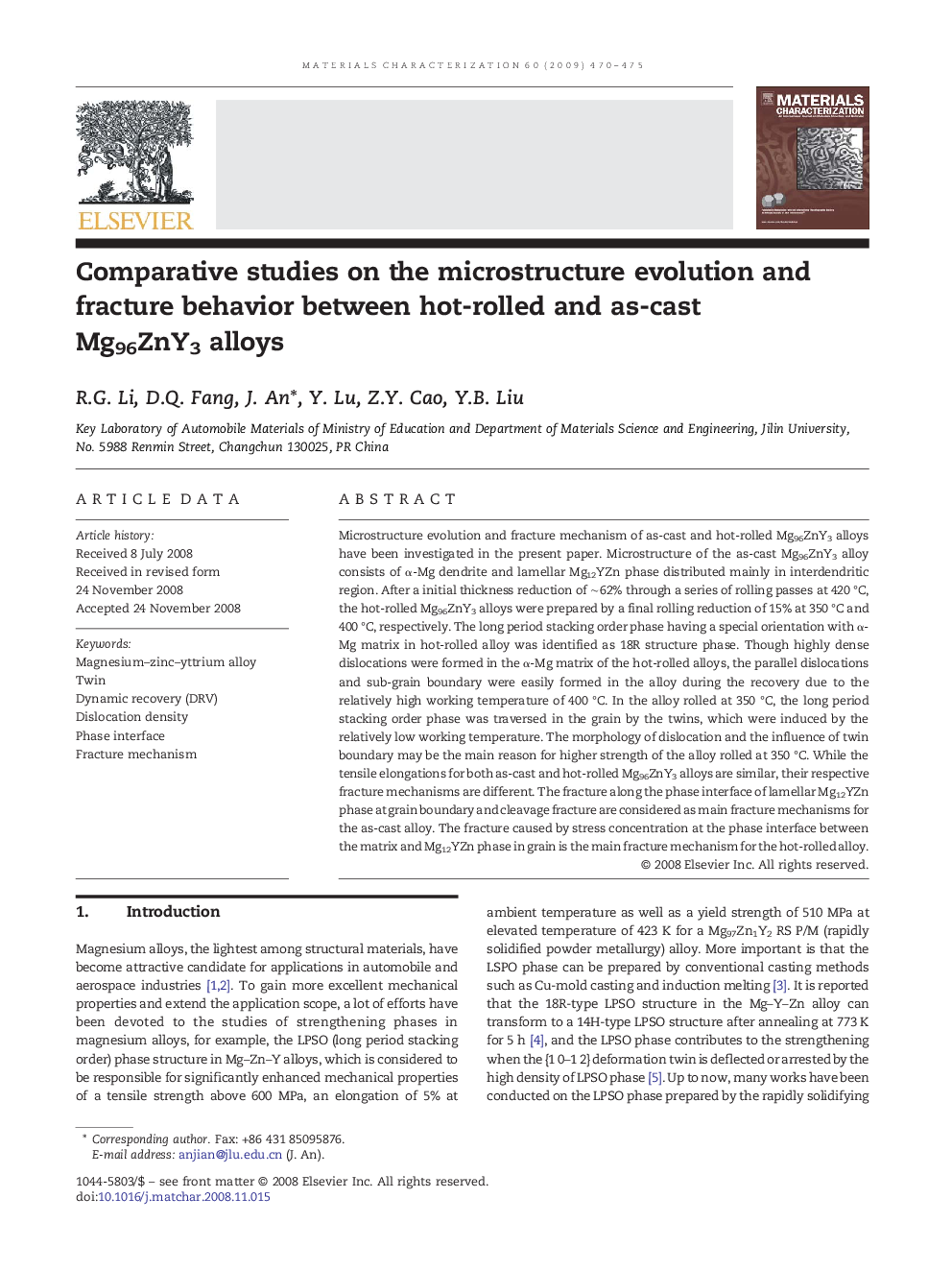| Article ID | Journal | Published Year | Pages | File Type |
|---|---|---|---|---|
| 1571850 | Materials Characterization | 2009 | 6 Pages |
Abstract
Microstructure evolution and fracture mechanism of as-cast and hot-rolled Mg96ZnY3 alloys have been investigated in the present paper. Microstructure of the as-cast Mg96ZnY3 alloy consists of α-Mg dendrite and lamellar Mg12YZn phase distributed mainly in interdendritic region. After a initial thickness reduction of â¼Â 62% through a series of rolling passes at 420 °C, the hot-rolled Mg96ZnY3 alloys were prepared by a final rolling reduction of 15% at 350 °C and 400 °C, respectively. The long period stacking order phase having a special orientation with α-Mg matrix in hot-rolled alloy was identified as 18R structure phase. Though highly dense dislocations were formed in the α-Mg matrix of the hot-rolled alloys, the parallel dislocations and sub-grain boundary were easily formed in the alloy during the recovery due to the relatively high working temperature of 400 °C. In the alloy rolled at 350 °C, the long period stacking order phase was traversed in the grain by the twins, which were induced by the relatively low working temperature. The morphology of dislocation and the influence of twin boundary may be the main reason for higher strength of the alloy rolled at 350 °C. While the tensile elongations for both as-cast and hot-rolled Mg96ZnY3 alloys are similar, their respective fracture mechanisms are different. The fracture along the phase interface of lamellar Mg12YZn phase at grain boundary and cleavage fracture are considered as main fracture mechanisms for the as-cast alloy. The fracture caused by stress concentration at the phase interface between the matrix and Mg12YZn phase in grain is the main fracture mechanism for the hot-rolled alloy.
Related Topics
Physical Sciences and Engineering
Materials Science
Materials Science (General)
Authors
R.G. Li, D.Q. Fang, J. An, Y. Lu, Z.Y. Cao, Y.B. Liu,
